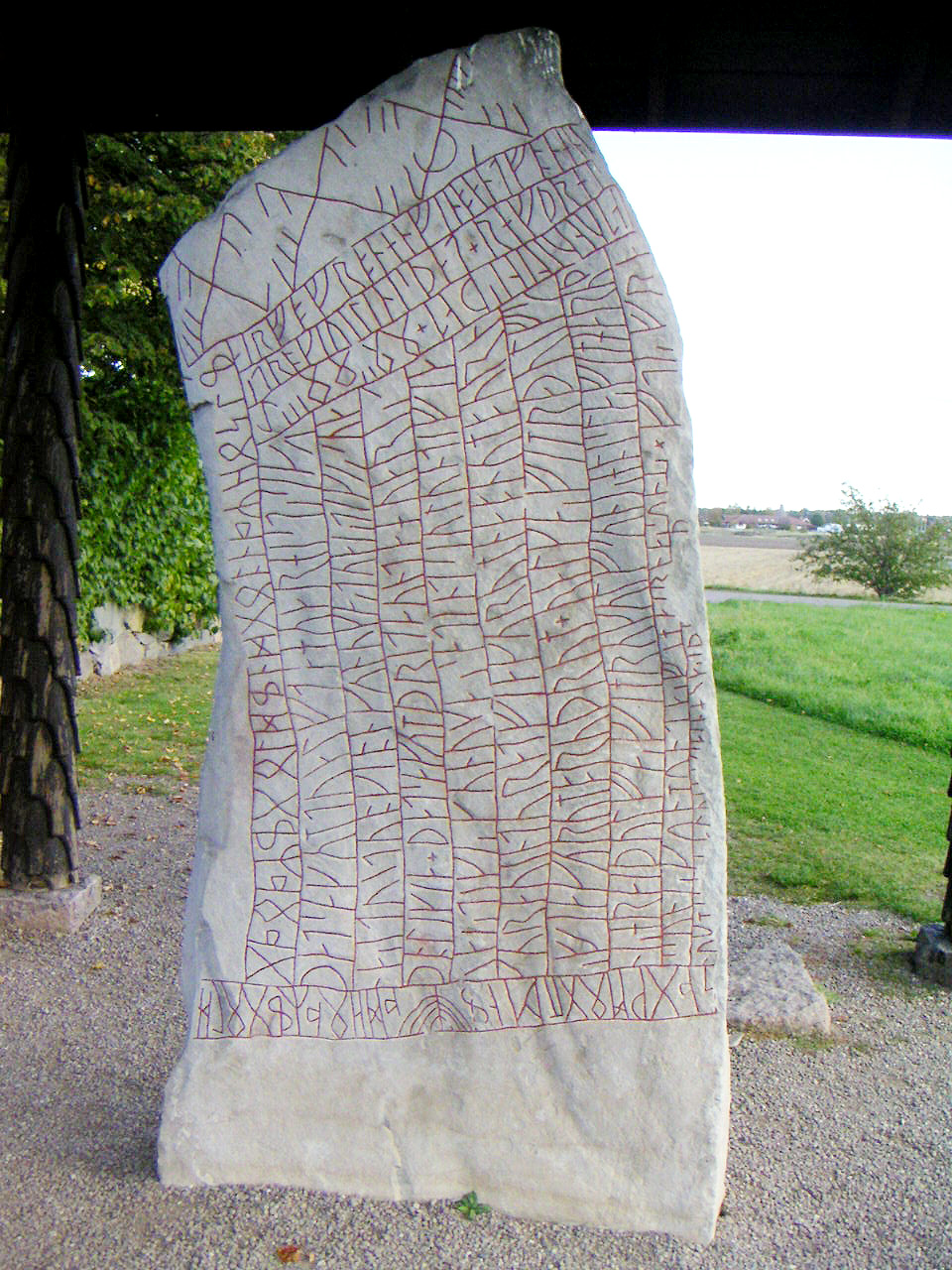1,200-Year-Old Viking Runestone May Warn of Climate Change, Study Says
Credit to Author: Becky Ferreira| Date: Thu, 09 Jan 2020 19:41:16 +0000
The Rök runestone, which is etched with more than 700 characters and is dated to about 800 CE, is one of Sweden’s most important cultural artifacts. The meaning of its enigmatic inscription has generated debate for over a century, but there is some consensus that it was carved or commissioned by a man named Varinn to commemorate his deceased son Vāmōðʀ.
Now, 1,200 years after its carving, we may have learned more about its message. The runestone may be engraved with an expression of anxiety over an impending climate crisis, according to a study published on Wednesday in Futhark: International Journal of Runic Studies.
An interdisciplinary team led by Per Holmberg, a professor of Swedish at the University of Gothenburg, proposes that Varinn intended to link his son’s death and afterlife to broader climate-related preoccupations that had been passed down from earlier generations.
“The main object for Varinn was to place the death of his son in a meaningful context of eschatological events, through a monument that would last forever,” Holmberg and his colleagues said in the study. “The expectations of a final battle against destructive cosmological powers—in which Varinn’s son was supposed to take part—were connected to a memory of climate crisis and probably to the anxiety about a similar one occurring.”
In particular, the researchers spotlight the extreme weather events of 536 CE, which has been described by Harvard historian Michael McCormick as probably the “worst year to be alive” in known human history, as a possible source of longstanding climate fears.

Scientists think this climate crisis was likely triggered by volcanic eruptions that belched ash and dust in the atmosphere, causing global cooling. The unpredictable weather resulted in widespread crop failures and starvation that devastated civilizations around the world. Archeological evidence suggests the human population of the Scandinavian peninsula was halved by the disaster.
Though the Rök runestone was inscribed some 300 years after this crisis, Holmberg and his colleagues suggest that the recollection of it loomed large in the memories of the Vikings. In fact, previous research has linked the traumatic impact of the crisis to Ragnarök, a famous Nordic myth describing a divine apocalypse. The myth includes allusions to the blotting out of the Sun and a severe three-year cold spell called Fimbulwinter.
“The eschatological themes of Ragnarök and the memory of the 536 CE crisis, passed down through the centuries, may have been reactivated at the time of Vāmōðʀ’s demise,” the team speculated in the study.
The researchers also point to three other celestial events that may have occurred within living memory of the runestone’s inscription: a major solar storm in 775 CE that turned skies red, a very cold summer that same year, and the near-total solar eclipse of 810 CE. Latent anxieties about climate, absorbed into intergenerational storytelling, could have been further activated by these weird cosmic anomalies.
With that backdrop in mind, the team suggests that some of the allusions in the inscription may be climate-related. Take, for instance, this passage translated by Holmberg and his colleagues as: “Who nine generations ago lost their life with the Hraiðgutaʀ [i.e. in the east]; but still decides the matter?”
The team suggest that this “who” may have been the Sun, and its temporarily death was a nod to the 536 CE crisis. “Given the current dating of the inscription to around 800 CE and an approximation of each generation to thirty years, the event alluded to would have happened in the early sixth century,” the researchers said in the study.
“Thus, the climate crisis from 536 CE turns out to be an obvious candidate for this ‘death’ of the Sun, when it failed to rise in the east,” they added. “Two hundred and seventy years is a long time indeed, but a memory of nine generations does not seem unreasonable.”
Moreover, the team noted that if Vāmōðʀ was the ninth in the line of his kin since the Sun’s death, “his demise could have provoked the idea of a new menace.” The battle described by the runestone, which Vāmōðʀ is apparently destined to help wage during his afterlife, had a cosmological subtext that promised a “renewed Earth—and the new, now unthreatened Sun,” the team said.
Holmberg and his colleagues highlight many other passages that could support a climate-related interpretation, though they said they “are not so arrogant as to believe that we have now solved every problem in the Rök text.”
Ultimately, much of the original intent behind the Rök runestone is likely to remain shrouded in mystery. But perhaps Scandinavian cultures simply have a knack for expressing ominous messages about climate disasters, which run through the myths of Ragnarök all the way to the invigorating speeches of Swedish activist Greta Thunberg today.
This article originally appeared on VICE US.